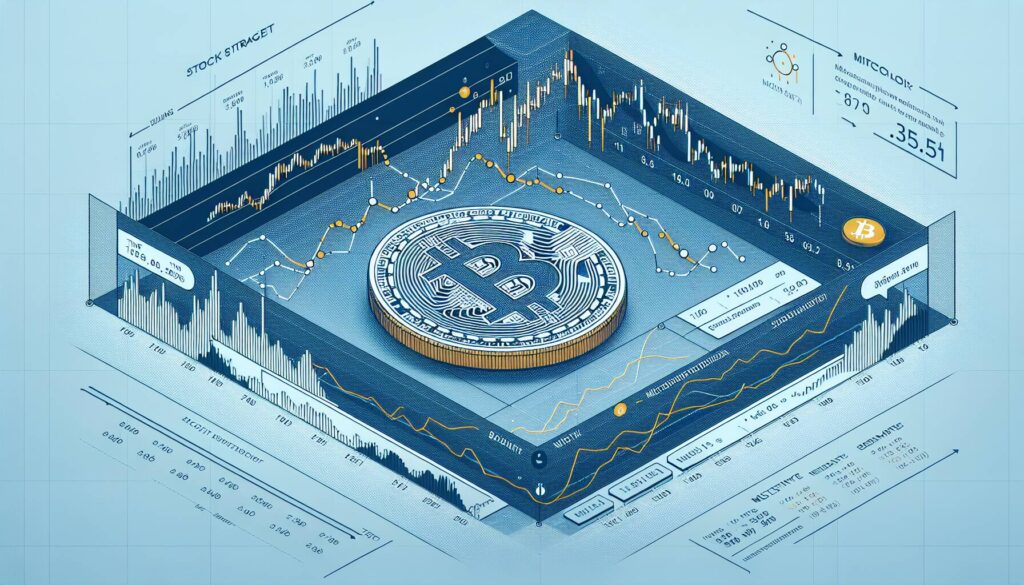The highly anticipated consumer price index (CPI) report, set to be released this Wednesday, marks a significant moment as it will be the first under President Donald Trump’s administration. Investors are keenly watching this report, especially as indications suggest a potential easing of inflation, which could spark renewed interest in riskier assets that have faced declines in recent weeks.
Analysts predict that the CPI will show a year-over-year decline in headline inflation from 3% to 2.9%. Core inflation, which strips out the often volatile food and energy prices, is expected to decrease slightly to 3.2%. A drop in these figures could strengthen the case for an interest rate cut, providing a potential lifeline for investments that have recently suffered, including a notable 10% dip in the S&P 500 and a staggering 30% drop in Bitcoin’s price, now hovering around ,000.
President Trump and Treasury Secretary Scott Bessent have advocated for lower long-term Treasury yields as a means of reducing federal funds rates. Current trends show a fall in the 10-year yield from 4.8% to 4.2%, alongside a weakening dollar index below 104 and stabilization of WTI crude oil prices in the mid- range. This aligns with the administration’s broader economic objectives.
“The Truflation Index has also dropped to 1.35%, its lowest level since September 2020,” an economic analyst notes. “However, five- and ten-year inflation expectations remain above 2%, suggesting ongoing challenges in managing long-term inflation perspectives.”
As the Federal Open Market Committee (FOMC) meeting approaches on March 18-19, all eyes are on Chair Jerome Powell, who is expected to maintain the federal funds rate between 4.25% and 4.50%. Investors will be closely scrutinizing the inflation report, as a cooler-than-expected reading could open the door for potential rate cuts, further influencing the market dynamics for risk assets.

Impact of the Upcoming Consumer Price Index (CPI) Report
The upcoming CPI report is crucial as it may influence interest rates, investment strategies, and overall market sentiment. Here are the key points related to this event:
- First CPI Report Under Trump: This marks the initial CPI report during President Donald Trump’s administration, setting the tone for future economic policy.
- Projected Inflation Decline:
- Headline inflation is expected to decrease to 2.9% from 3%.
- Core inflation (excluding food and energy) is forecasted to fall to 3.2%.
- Interest Rate Implications:
- Slower inflation increases the likelihood of an interest-rate cut.
- A potential cut would make riskier investments more appealing.
- Recent Market Performance:
- The S&P 500 has decreased nearly 10% from its peak.
- Bitcoin has dropped approximately 30% to around ,000.
- Monitoring Treasury Yields:
- Efforts to lower 10-year Treasury yields are underway, with the yield dropping from 4.8% to 4.2%.
- The weakening dollar index (DXY) below 104 is also noteworthy.
- Long-term Inflation Expectations:
- The Truflation Index has reached its lowest at 1.35% since September 2020.
- Five- and 10-year inflation expectations remain above 2%, indicating ongoing concerns.
- FOMC Meeting Insights:
- Chair Jerome Powell is likely to keep the federal funds rate steady at 4.25%-4.50%.
- Market reactions will depend closely on the CPI report outcome.
- Potential Outcomes:
- A cooler-than-expected CPI reading may lead to rate cuts and boost investor confidence.
- Conversely, a higher-than-anticipated reading could result in prolonged high rates, further influencing the markets negatively.
The implications of the CPI report could significantly impact personal finances, investment choices, and economic outlook for individuals and businesses alike.
Market Reactions to Upcoming CPI Report: Insights and Implications
The impending consumer price index (CPI) report stands as a pivotal moment for financial markets amidst a climate of heightened volatility. Investors are eagerly anticipating indications of cooling inflation, which may signal that the Federal Reserve is leaning towards interest rate reductions—a boon for those involved in riskier assets. This situation reflects a broader narrative in the economic landscape where various market drivers are at play, particularly under the Trump administration.
Competitive Advantages: If the CPI data reveals a notable decrease in inflation, it could rejuvenate investors’ faith in equities and cryptocurrencies that have recently taken substantial hits. For instance, the current declines in the S&P 500 and Bitcoin position them as attractive propositions should the Fed pivot towards accommodating monetary policies. The potential for lower Treasury yields could also enhance corporate borrowing, spurring growth and boosting investor sentiment. Furthermore, a decrease in the dollar index can potentially uplift exports, benefiting companies reliant on international markets.
Disadvantages and Challenges: On the flip side, prolonged inflation data above the Fed’s target may lead to a tightening in monetary policy, presenting significant headwinds for speculative assets. A “hot” inflation report could keep interest rates elevated, adversely affecting market sentiment and dissuading investment in high-risk sectors. Furthermore, lingering uncertainty about long-term inflation expectations remains a double-edged sword, complicating Trump’s policy narratives while subjecting investors to further market adversity.
Who Stands to Gain or Lose: If the CPI report suggests cooling trends, those invested in technology stocks or growth-oriented firms could rapidly gain investor attention, seeing their values rebound significantly. Conversely, investors betting on fixed-income securities might find themselves in a precarious position should inflation not exhibit the expected moderation, as the risk of further interest rate hikes increases. Additionally, sectors sensitive to interest rate fluctuations, like real estate and utilities, may see mixed results depending on how inflation narratives unfold post-report.
In summary, the reaction to the CPI report is poised to significantly impact various stakeholders across the market. With prospective advantages for risk-oriented investors especially if the inflation outlook improves, the stakes are high, and the implications will echo through numerous investment strategies.

















